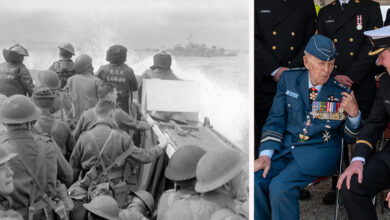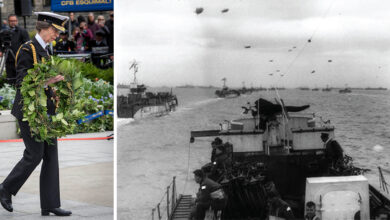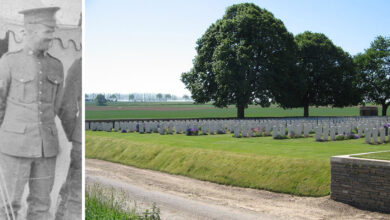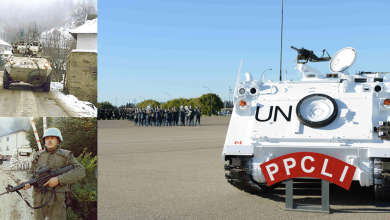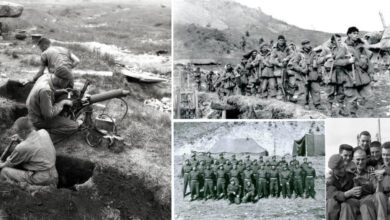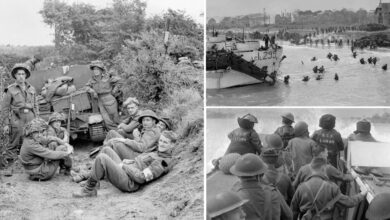History
The Mud Soldier sculpture commemorates the 100th Anniversary of the Battle of Passchendaele
For a few fleeting days in late July, tourists and locals had the opportunity to witness a
World War One memorial like no other in London’s Trafalgar Square.
The Mud Soldier, created by Dutch artist Damian van der Velden, depicted a hunched over First World War soldier.
The purpose of the Mud Soldier was not only to commemorate the 100th anniversary of the Battle of Passchendaele but to capture the essence of the horrors faced by the soldiers who fought in this battle.
The Battle of Passchendaele is recognized as not only a gruesome battle because of the death toll but because of the conditions soldiers faced caused by the endless rains.
And so, in tribute to what these soldiers faced, the Mud Soldier, created entirely of mud and sand, eroded within a few days from rain, or the sprinkler system turned on to continue the eroding effect.
“It fits into this idea that Passchendaele being a battle to represent the futility of war. In this sense, surely the suffering of the soldiers in the mud, the cold, the constant wetness, the coughs, the slow and sometimes horrific slaughter by shellfire or snipers, it all seems to be captured by this slowly dissolving solider; which is not a memorial or monument, but I think it is a testimonial to the suffering of the soldiers, quite clearly,” said Dr. Tim Cook, historian with the Canadian War Museum.
Although, when reflecting on this battle nearly a century later, the futility of war certainly comes to mind for many, the Battle of Passchendaele was, also, a clear and decisive win for the Canadian Corps.
Passchendaele was a British offensive launched on July 31, 1917. One of the major objectives of this battle was to drive the Germans away from essential Channel Ports and eliminate U-Boat bases on the coast.
In order to claim victory, the Allied Forces, comprised of not only the British but soldiers from Australia, New Zealand and more, were ordered to take Passchendaele Ridge. However, what should have been an objective achieved rather quickly dragged on for months because of the constant rains.
“It’s generally seen as one of the worst battles of the War. This idea of the battle in the mud Flanders, this sea of unburied bodies, it really seems to capture the futility of war, I think Passchendaele, it’s almost at the other end of the spectrum when we compare to Vimy,” commented Cook.
After several months of fighting, Sir Douglas Haig, the commander-in-chief of the British Expeditionary Force, ordered the Canadians to deliver victory.
The Canadian Corps, 100,000 strong, had been fighting the Battle of Hill 70 during this time.
“The Canadians are considered, at this point, as one of the best, if not the best, fighting formation on the Western Front,” noted Cook.
Sir Arthur Currie, Commander of the Canadian Corps, prepared carefully for the fight. The Canadian troops arrived in mid-October to relieve their counterparts.
The first Canadian attack was launched on Oct. 26 and by mid-November, the Canadians had captured the ridge and taken yet another battle for the Allied Forces.
“It really solidifies our reputation as a fighting formation that can deliver victory under the most trying of circumstances,” said Cook.
The victory at Passchendaele came at a heavy cost. Nearly 16,000 Canadians fell at the Battle of Passchendaele and the British had an estimated 275,000 casualties over the course of the Battle.
The military significance of the Battle of Passchendaele is still debated amongst historians but the cultural significance of this Battle has proven itself time and time again in Canada. There have been many novels, stories and even a movie all centred around the Battle of Passchendaele.
“It has a significant hold over the cultural landscape, the memory of the war. It’s the antithesis of Vimy for us and for the British it is simply seen as one of these horrific battlefields of slaughter,” said Cook.




